02:54
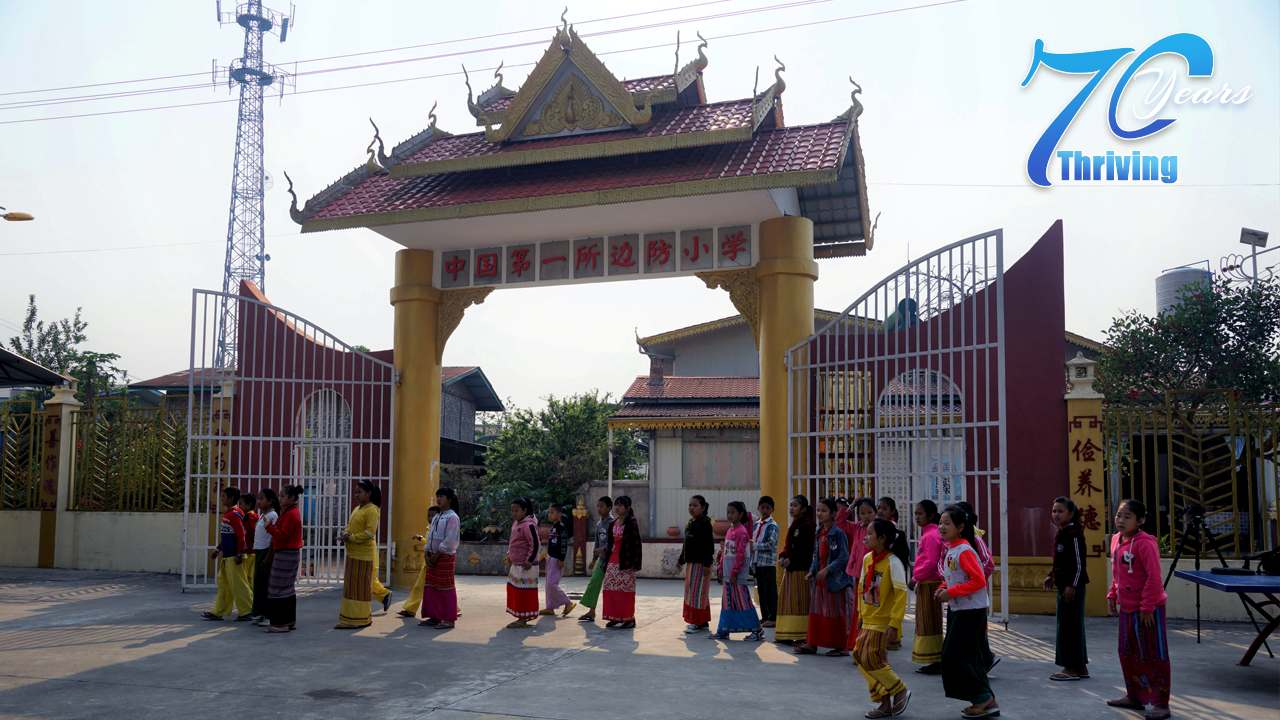
Jie En, a girl from Myanmar, travels abroad every day.
Each morning, the 11-year-old passes through the immigration checkpoint near her home to go to school in a Chinese village.
“I love studying at this school because the campus is beautiful. Besides, I can learn different things and play with many friends here,” she said. Jie En is her transliterated Chinese name.
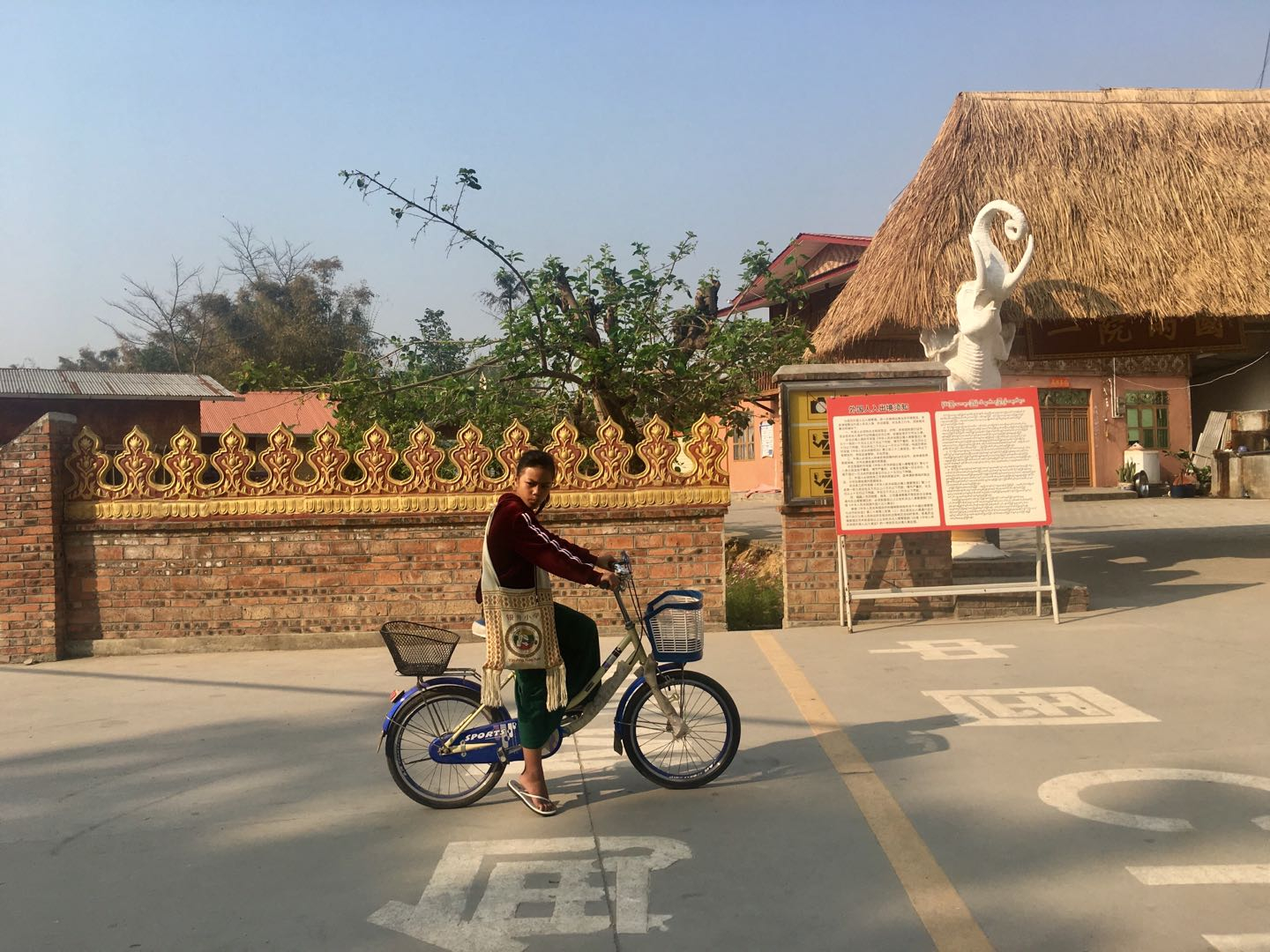
Jie En crosses the borderline between Myanmar and China for schooling at a Chinese elementary school. /CGTN Photo
Jie En crosses the borderline between Myanmar and China for schooling at a Chinese elementary school. /CGTN Photo
Yinjing Elementary School is located in the border city of Ruili in southwest China' Yunnan Province. It now has 36 students from neighboring Myanmar towns, accounting for about 30 percent of the total student number.
The elementary school has a very low threshold for children from abroad to register. Sun Jialiang, principal of the school, told CGTN that they only need to provide identity and birth certificates translated by Myanmar's immigration office before admission. They also enjoy priority in exit and entry.
One can only distinguish them from what they wear: The Myanmar children wear white and green school uniforms, while the Chinese students wear the traditional costumes of the Dai ethnic group. The students receive the same education and enjoy equal treatment.
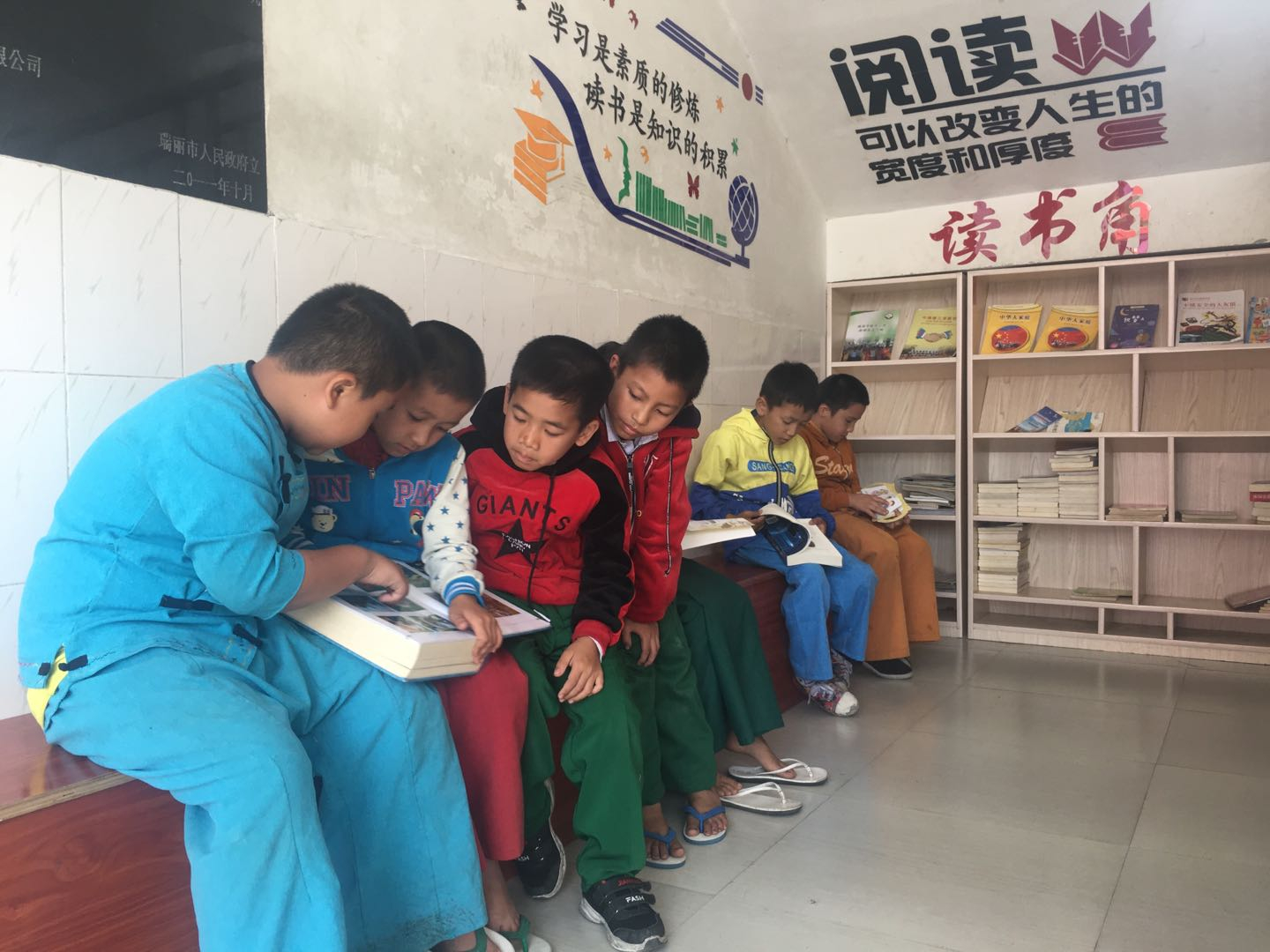
Students from China and Myanmar read books together during the class break in Yinjing Elementary School in Ruili, southwest China's Yunnan Province. /CGTN Photo
Students from China and Myanmar read books together during the class break in Yinjing Elementary School in Ruili, southwest China's Yunnan Province. /CGTN Photo
Just like their Chinese peers, the Myanmar pupils don't need to pay any tuition fees and are provided with free breakfasts and other assistance.
“China and Myanmar have always been good neighbors. This practice is conducive for harmony and stability at the border,” said Sun.
In fact, despite the different nationalities, most of the students share the same ethnic origin of the Dai people. So, besides the regular curriculum, the school also offers some specialized courses.
“We set up a course to teach them Chinese, Myanmar and Dai languages with our own textbooks, to promote mutual understanding and cultivate cross-border friendships from an early age,” Sun said.
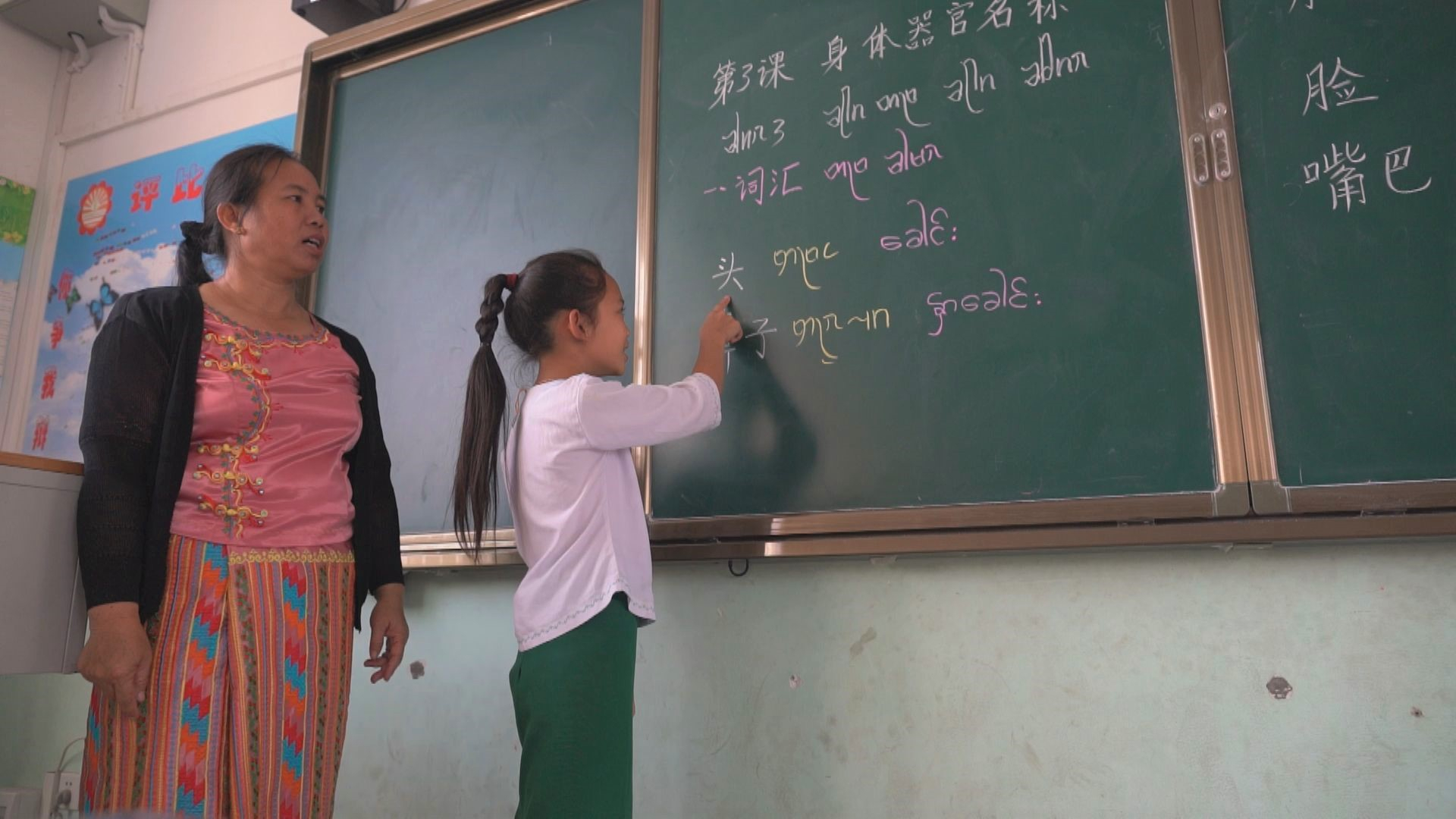
A teacher at Yinjing Elementary School teaches a student to learn Chinese, Myanmar and Dai languages. /CGTN Photo
A teacher at Yinjing Elementary School teaches a student to learn Chinese, Myanmar and Dai languages. /CGTN Photo
Their routine physical exercise during the class break is also different from other elementary schools in China. Instead of a unified activity, the school practices the Gayang dance with their pupils, a traditional Dai dance.
The friendship between the students can easily be felt.
“We're good friends. We do homework together, and play sepak takraw (kick volleyball) and basketball together,” a Chinese third-grader told CGTN.
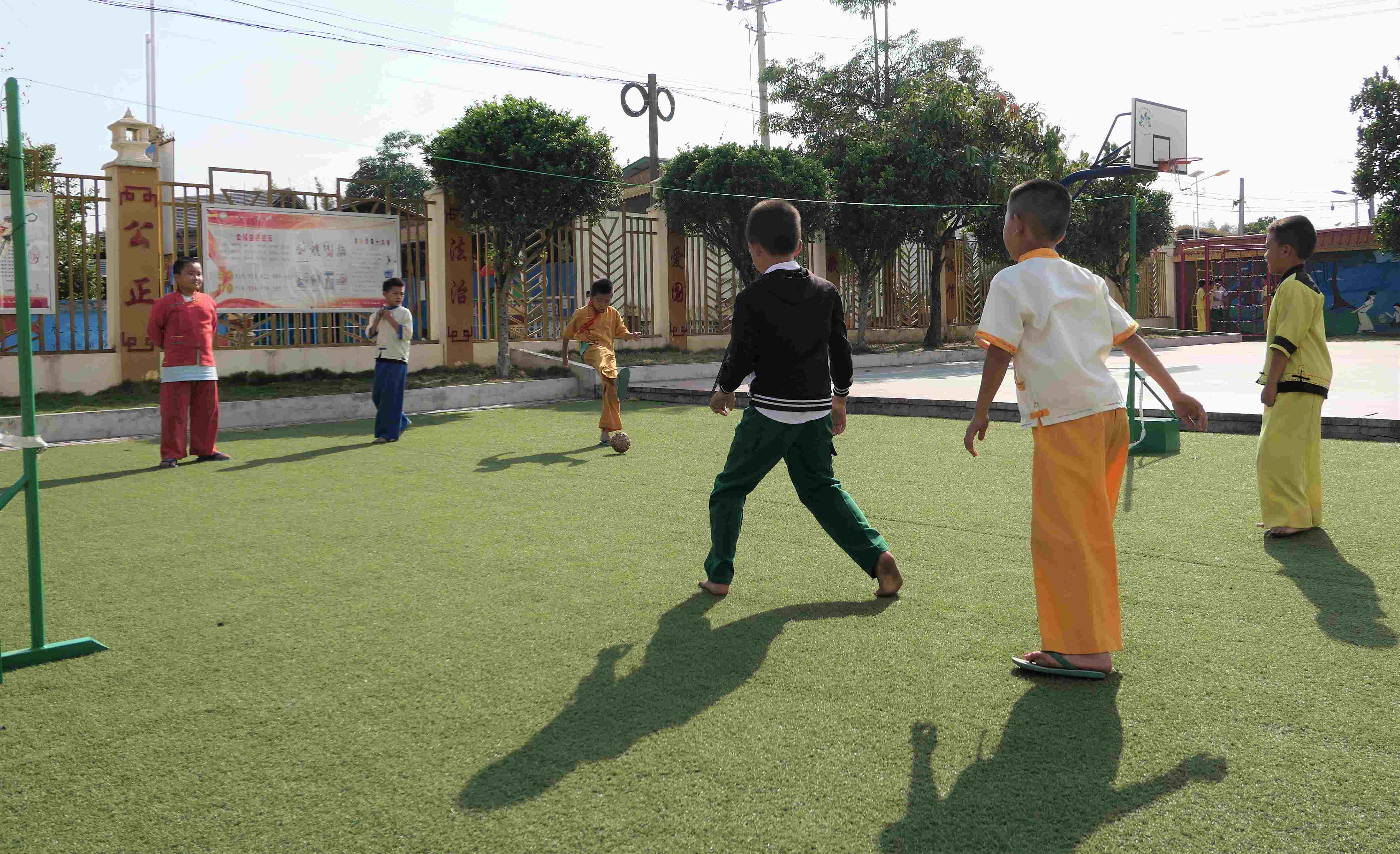
The students play sepak takraw (kick volleyball) together, a popular sport in Myanmar, in Yinjing Elementary School in Ruili, southwest China's Yunnan Province. /CGTN Photo
The students play sepak takraw (kick volleyball) together, a popular sport in Myanmar, in Yinjing Elementary School in Ruili, southwest China's Yunnan Province. /CGTN Photo
China shares a long border with Myanmar. As the Belt and Road Initiative deepens, the two countries are collaborating closer in various areas. Now, Ruili hosts at least 50,000 workers from Myanmar, who are trying to better integrate into the local communities. Education, undoubtedly, has become an important tool in bridging the gaps between the people from both countries.
“I believe the students from Myanmar are sure to better understand their country, China and the whole world with knowledge absorbed here, and contribute to the friendships for generations to come,” said Sun.
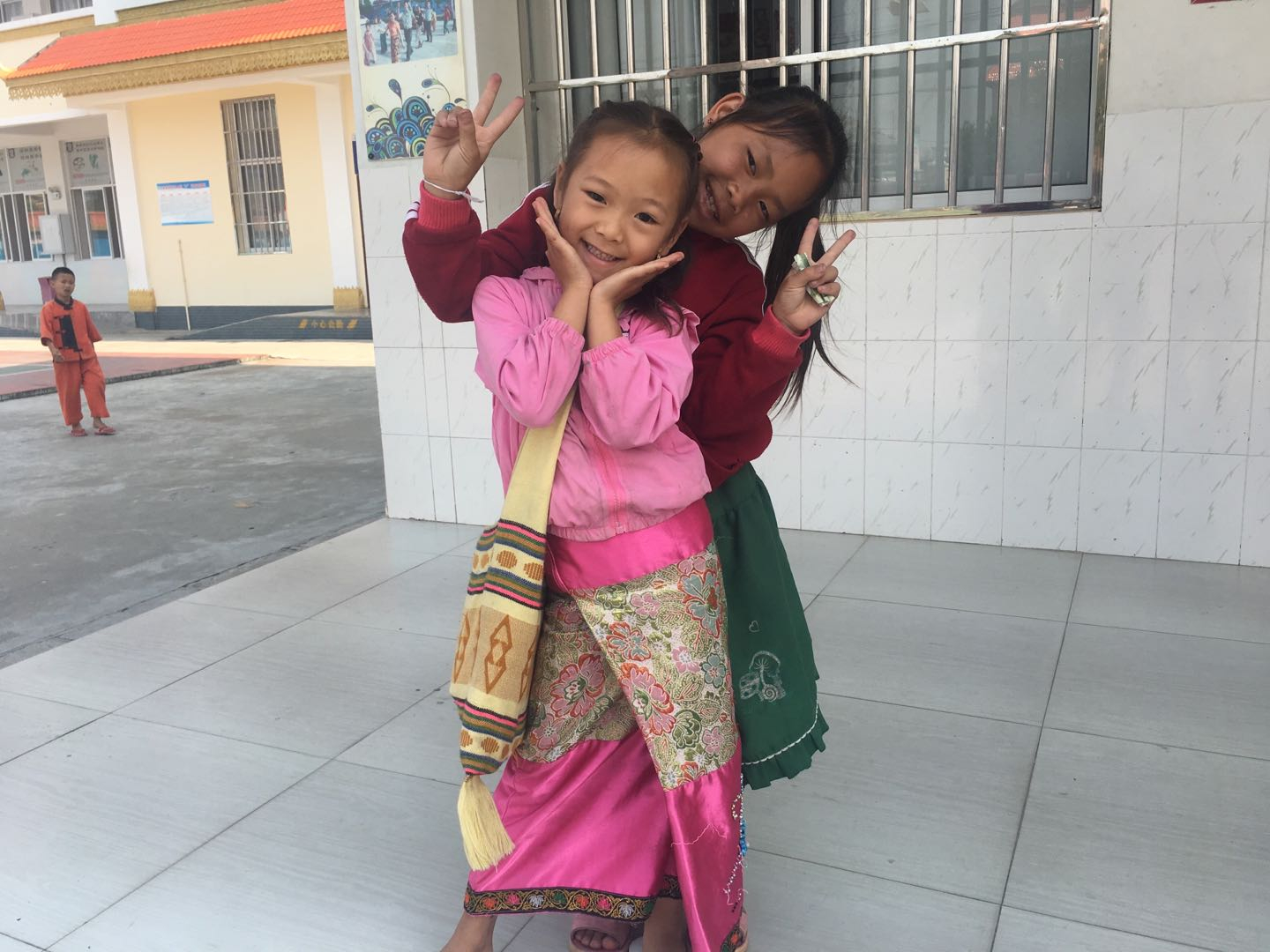
A Chinese girl and her Myanmar classmate pose for a photo together in Yinjing Elementary School in Ruili, southwest China's Yunnan Province. /CGTN Photo
A Chinese girl and her Myanmar classmate pose for a photo together in Yinjing Elementary School in Ruili, southwest China's Yunnan Province. /CGTN Photo
Jie En's mother is also looking for opportunities in China. She runs a small restaurant near the school. Like many other parents, she is thinking about her daughter's long-term future.
“My home is close to China. We send her to this school, with the hope that she can gain more knowledge here, and work or do business in China in the future,” she said.
Yinjing is not the only school in Ruili to accept students from Myanmar. Data from the local government shows there are a total of about 4,000 students of different levels from Myanmar in Dehong Dai and Jingpo Autonomous Prefecture, which administrates Ruili. Of them, about 2,700 are elementary students.
Wei Gang, governor of the prefecture, said it's a test for the government's public service capabilities.
“Frankly speaking, the increasing influx of Myanmar students will bring more challenges to us, such as financial pressure, but we will carry on this significant undertaking,” Wei told CGTN.
As the school mission goes – education has no border, and love shortens distances. The seeds of love and friendship are burgeoning in the hearts of the children.







